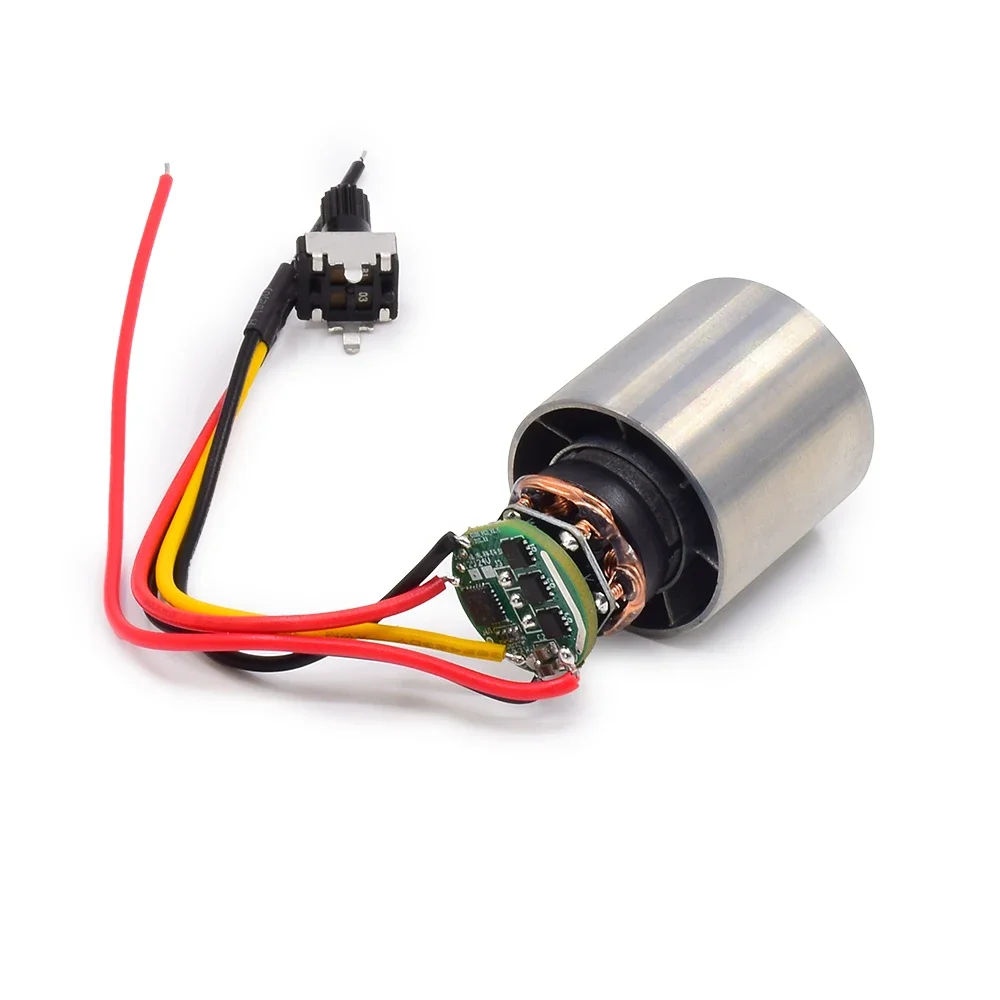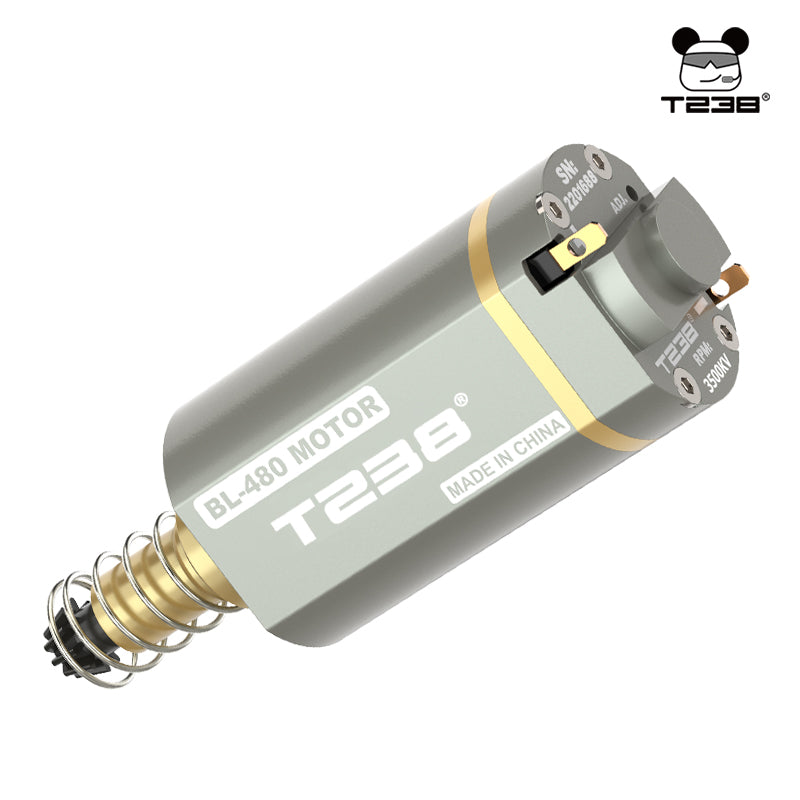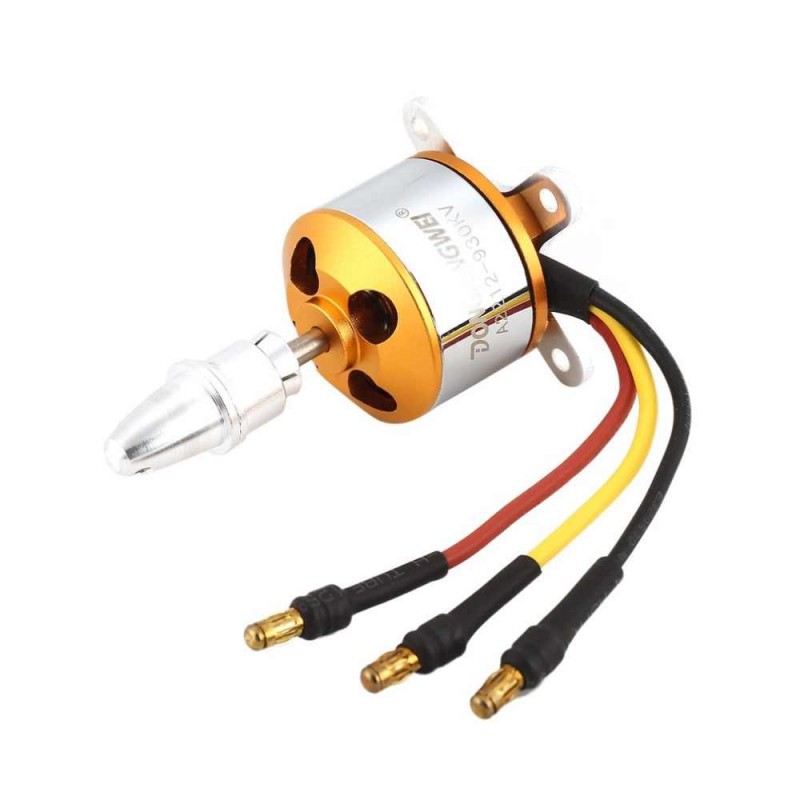When it comes to powering robotics and drones, selecting the right motor is crucial for achieving optimal performance and efficiency. Among the various options available, brushless motors have gained significant popularity across these domains. Their unique design offers several advantages that benefit both manufacturers and users in robotics and drone applications. In this article, we’ll explore the key features and benefits of choosing a brushless motor, focusing on why they are increasingly favored for engineering advanced machines.
Understanding Brushless Motor Technology
What Sets Brushless Motors Apart
Brushless motors use a different mechanism than traditional brushed motors. Instead of relying on physical brushes to conduct electricity to the rotor, brushless motors utilize electronic controllers to send power to the motor. This design eliminates mechanical friction often found in brushed motors, allowing for smoother operation and greater reliability. In brushless designs, the rotor, containing magnets, spins around a stationary set of coils. This arrangement creates electromagnetic forces that drive the motor efficiently. This unique configuration results in many benefits, making brushless motors suitable for high-performance applications in robotics and drones. Their efficiency and power output make them a go-to choice for engineers aiming for high performance.
Types of Brushless Motors
Brushless motors come in various types, primarily categorized into two main types: inner rotor and outer rotor motors. Inner rotor motors have the rotor located inside the stator, while outer rotor motors have the rotor surrounding the stator. Each type has distinct advantages based on application requirements. Inner rotor motors typically provide better torque-to-weight ratios, making them more preferable for most drone designs and agile robotic movements. In contrast, outer rotor models offer a broader surface area, which can support larger propellers or attachments in certain designs. Understanding these variations will allow engineers to select the optimal motor type based on the specific requirements of the project.

Increased Efficiency
Energy Savings
One of the most significant benefits of brushless motors is their unparalleled efficiency. These motors convert electrical energy into mechanical energy with less waste than brushed motors. The absence of brushes significantly reduces energy loss due to heat and friction, allowing more power to be directed where it matters most—increasing the overall efficiency of the system. In practical terms, this translates into longer flight times for drones and improved battery life for robotic applications, ultimately lowering operational costs over time. This reduced energy consumption is a vital metric for professionals aiming to optimize their systems while minimizing costs.
Optimal Performance
In robotic applications and drone technology, efficiency directly translates into performance. Brushless motors maintain their efficiency across different load conditions, allowing for smoother and more consistent operation. This capability is especially beneficial when lifting heavy payloads or making sharp turns in mid-air. The ability of brushless motors to adapt to varying demands without sacrificing power makes them an essential component in optimizing the overall effectiveness of robotic and drone systems. This consistency can enhance the user experience, making operations smoother and more reliable.

Lower Maintenance Needs
Reduced Wear and Tear
The construction of brushless motors inherently leads to lower maintenance requirements compared to traditional brushed motors. The absence of brushes means there is no friction between moving parts that can wear down over time. This feature significantly reduces mechanical wear, increasing the lifespan of the motor itself. Users can enjoy greater reliability without the frequent repairs or replacements often associated with brushed motors. A longer lifespan not only fosters trust in the product but also lessens the environmental impact, as fewer resources are consumed in manufacturing replacements.
Longevity and Cost-Effectiveness
The durability of brushless motors also translates into long-term cost savings. While the initial investment may be higher than for brushed motors, the reduction in maintenance and replacement needs quickly justifies the expense. Robotics and drone operators often seek equipment that requires minimal downtime and is cost-effective over time. By choosing brushless motors, users can enjoy a long-lasting solution that minimizes operational disruptions and enhances overall productivity. This ongoing reliability helps companies save money in the long run, making brushless motors a wise choice for businesses focused on maximizing returns.

Greater Control and Precision
Enhanced Responsiveness
Precision is paramount in applications that require fine motor control, and brushless motors excel in this regard. Their design allows for superior responsiveness, enabling electronic control systems to adjust power delivery almost instantly. This capacity ensures that users can operate their machinery with precision that brushed motors often lack. Whether navigating the tight corners of a robotic assembly or capturing precise aerial shots with a drone, brushless motors facilitate movements with a level of confidence and accuracy that directly contributes to enhanced functionality.
Fine-Tuning Options
Many brushless motor controllers come equipped with customizable settings that allow users to program acceleration curves, speed limits, and torque levels for optimal performance. This adaptability enables designers to fine-tune their systems based on specific operational requirements. For instance, in drone applications, engineers can program the motor to accommodate various flight patterns, making it easier to execute complex maneuvers. Such features can lead to breakthroughs in drone maneuverability and robotic functions, making brushless motors an attractive option for anyone aiming to push the boundaries of what their machines can do.

Lightweight and Compact Design
Space-Saving Features
Brushless motors tend to have a more compact design compared to their brushed counterparts, allowing for lighter configurations without sacrificing power. This lightweight characteristic proves beneficial in robotics, where weight can drastically affect movement and overall efficiency. Drones benefit similarly since weight directly impacts flight capability, stability, and battery life. By integrating a brushless motor, engineers can create more agile designs that perform better under diverse environmental conditions. Less weight not only optimizes performance but also enhances user experience by allowing easier handling and transport of devices.
Improved Payload Specifications
A lighter motor enables systems to support heavier payloads or additional components without compromising performance. For example, a drone equipped with a brushless motor can lift larger cameras or sensors, making it more versatile across various applications, including aerial photography and surveying. Similarly, robots can utilize a brushless motor to carry larger tools or complete more complex tasks, expanding the machine’s operational capabilities significantly. This flexibility often differentiates successful designs in competitive markets, allowing users to take on projects that require additional equipment or technology.

Superior Thermal Management
Consistent Operating Temperatures
Brushless motors typically generate less heat compared to traditional brushed motors. The lack of friction means less energy is lost as heat, enabling these motors to run cooler during operations. This feature is particularly significant in extended applications like long flights with drones or prolonged robotic tasks, where overheating can decrease performance and damage components. Consistent operating temperatures help maintain performance levels and prevent overheating, which is crucial for preserving motor integrity, lowering failure rates, and enhancing the lifespan of the overall system.
Effective Heat Dissipation
Many brushless motors are designed with enhanced thermal management systems. Features such as integrated cooling systems or strategic placement for optimal airflow allow these motors to dissipate heat effectively. This focus on heat management is critical in maintaining motor reliability in demanding environments. Users can confidently operate their machinery, knowing that the motor can handle the rigors associated with diverse operational contexts—be it high-speed flight, long-duration tasks, or challenging terrains.
Versatility Across Applications
Multiple Uses and Implementations
The flexibility of brushless motors makes them suitable for a wide range of applications beyond just drones and robotics. Different industries, including aerospace, automotive, and manufacturing, benefit from their adaptability. Engineers often choose brushless motors for applications requiring precision, reliability, and longevity. As technological advancements accelerate and industries evolve, more sectors continue to adopt brushless motors, further expanding their utility in diverse fields. This broad application range showcases the motor’s relevance in today’s market.
Continuous Innovation
The engineering community constantly innovates around brushless motor technology, leading to advancements in efficiency, performance, and versatility. As processes and needs evolve, manufacturers can incorporate the latest technologies, enhancing motor capabilities. For researchers and developers working on cutting-edge projects, utilizing advanced brushless motor technology keeps them at the forefront of innovation. By adopting these latest advancements, engineers can unlock new functionalities and create sophisticated designs that meet emerging demands, continually pushing the boundaries of robotic and aerial technologies.
The Choice for Innovation and Efficiency
Choosing a brushless motor for robotics and drones is about more than just selecting an efficient component; it represents a commitment to quality, performance, and continuous improvement. The benefits are abundant—from increased efficiency and lower maintenance requirements to improved precision and versatility. By opting for brushless motors, engineers and hobbyists alike can elevate their designs, ensuring they meet the demands of today’s high-performance applications.
Whether you’re looking to enhance the reliability of a drone or optimize the performance of an advanced robotic system, brushless motors provide a robust and intelligent choice. As technology continues to advance, these motors will undoubtedly play a critical role in shaping the future of robotics and aerial technology. By investing in brushless motors, you’re not just upgrading your machinery; you’re paving the way for future innovations that will define the next generation of technology. Embrace the change and unlock your projects’ full potential by integrating brushless motors into your designs, ensuring you gain a competitive edge in an ever-evolving landscape.